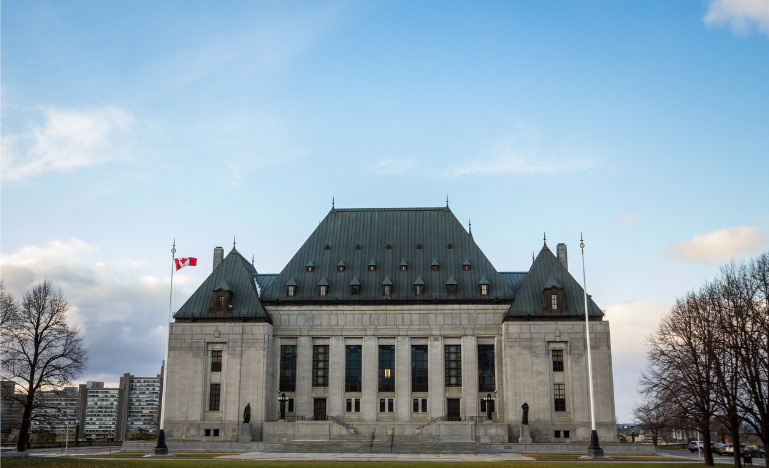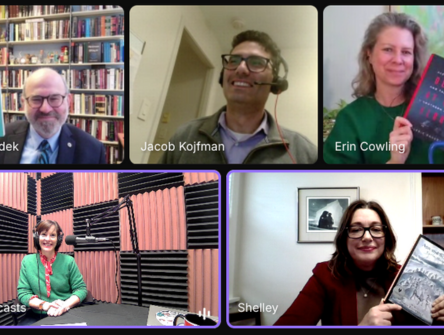A decision that protects free expression
Supreme Court tweaks the test to rule on Ontario anti-SLAPP legislation but remains divided in a defamation case.

The Supreme Court of Canada has dismissed two anti-SLAPP appeals out of Ontario. In the first, it ruled 9-0 that a land developer's lawsuit against a local environmental protection group was intended to silence them and therefore dismissed the action. But in the second, a split decision applying the same framework, the majority held that a doctor's defamation lawsuit against a lawyer could move forward.
"The decisions are a strong endorsement of the importance of protecting freedom of expression on matters of public interest," says Peter Kolla, a partner with Goodmans LLP in Toronto who represented the BC Civil Liberties Association as intervenors in both cases. He added that the rulings go a long way to vindicate the Ontario's anti-SLAPP law, and British Columbia's by extension.
In 1704604 Ontario Ltd v. Pointes Protection Association, the court unanimously laid out the framework for how courts are to interpret Ontario's legislation. The two-part test includes whether there is merit to the case, and weighing the public interests involved.
"Strengthening the integrity of the justice system by encouraging truthful and open testimony is inextricably linked to the freedom of participants to express themselves in the forums concerned without fear of retribution," wrote Justice Suzanne Côté for the court in Pointes.
In Bent v. Platnick, released concurrently, the Court was divided 5-4 on how to apply that same framework to the case at hand, where a lawyer and her firm were being sued for defamation, with the majority deciding that the case at hand did not qualify as a SLAPP.
Regardless, the decisions will draw attention across the country as both British Columbia and Quebec have similar anti-SLAPP legislation to Ontario's.
According to Adam Goldenberg, an associate with McCarthy Tétrault LLP in Toronto, who represented Canadian Constitution Foundation as intervenors in both cases, the SCC did not depart significantly from the framework that the Court of Appeal had established.
"The differences, and the basis for what I expect to be future litigation, are the way the court has articulated the test for the plaintiff in an alleged SLAPP suit, demonstrating that there are grounds to believe that the defendant has no valid defence, and that the proceeding has substantial merit," says Goldenberg.
"The court has said that the threshold that the plaintiff needs to meet is somewhere between the standard to get a claim struck on pleadings and the standard to have a claim dismissed on summary judgment, and it's going to be difficult for courts to figure out what that means in practice," he adds. "What is a 'real prospect of success' and how is that different from a 'reasonable prospect of success'?"
Goldenberg says that it would not be unexpected for the Supreme Court to take another anti-SLAPP case in another five or ten years to resolve a divided authority among courts across the country about what that threshold entails.
Justin Safayeni, a partner with Stockwoods LLP in Toronto, acted for the Centre for Free Expression, the Canadian Association of Journalists and the Communications Workers of America/Canada as intervenors in the Pointes case. He says that changes to the existing framework are hardly radical. Still, they are broadly favourable to protecting expression, given that they ratchet up the substantial merit test to something that constitutes a "real prospect of success" for a plaintiff's action. "They are tweaks to the existing framework that make the framework slightly more favourable to defendants," he says.
Goldenberg says that the court has left room for a broad interpretation of the public interest in deciding the threshold. He expects many cases, particularly defamation claims, to be resolved in the test's later stages.
Goldenberg adds that the court's test also carves out space for judicial discretion. That could produce a range of outcomes in cases that seem similar on their facts and pleadings, based on how particular motion judges view the strength of the evidence in the merit-based stage and the test's public-interest stages.
He acknowledges that the decision clarifies some uncertainty by answering questions mostly resolved by the Court of Appeal. "But it has done so in a manner that doesn't give lawyers a huge amount of confidence to predict how a particular anti-SLAPP motion will come out," says Goldenberg. "It's going to require excellent lawyering and good marshalling of the facts to succeed on either side of an anti-SLAPP motion."
Kolla says that, as an intervenor, BCCLA paid particular attention to the "weighing" part of the analysis, between the public interests of the litigation versus the public interest of what is expressed. The BBCLA advocated for a more robust interpretation to protect public interest expression, which Kolla believes the court achieved.
"The court recognizes that these kinds of cases can bring into play two different and competing public interests," Kolla says.
Goldenberg says the Canadian Constitution Foundation was gratified that the court didn't use Charter values to interpret the law's provisions. Instead, they used legislative history and relied on the text and statutory interpretation tools to do the heavy lifting. The Charter does come in during the public interest consideration in the last part of the test — where it should, according to Goldenberg.
"The framework has been changed, but I'm not sure it's necessarily been clarified in a way that's going to resolve some of the existing debate in the lower court jurisprudence or is going to leave new debates in their place," says Safayeni.
This was apparent in Bent, where the dissenting judges differed on whether the defendant had a "real prospect of success" for a defence of qualified privilege, which allows for honest communications in certain circumstances. They also disagreed on how to weigh the harms of Bent's expression.
As a result, the pre-trial hearings to determine whether the suit is a SLAPP or not will be complicated, lengthy and expensive, says Safayeni. And they will increasingly look like summary judgment motions.
"It stands to reason that if you hold the line or increase the threshold when it comes to the merits," he says, "that the parties are going to spend just as much time and energy, if not more so, addressing that issue, even if in most cases that's not what's going to dictate the result."


